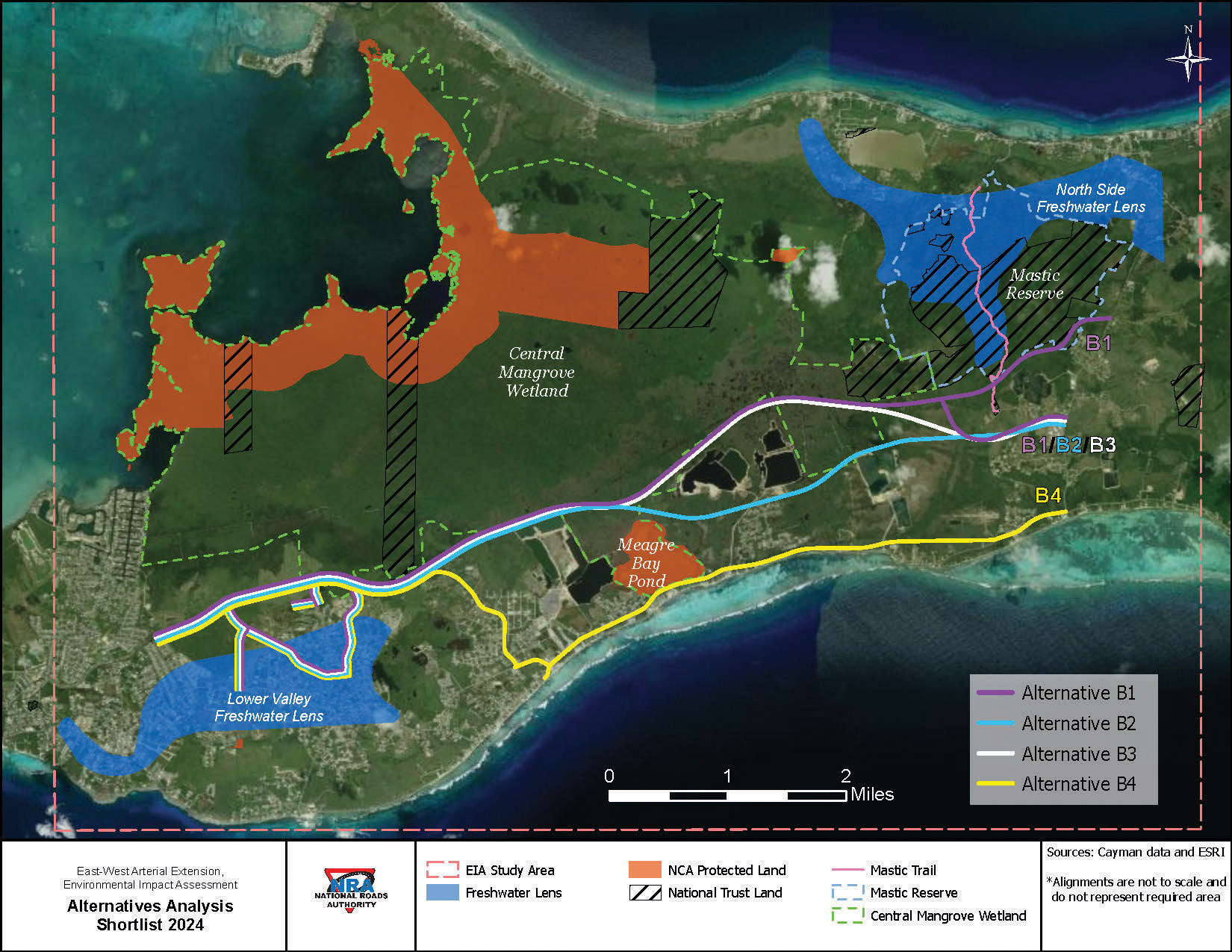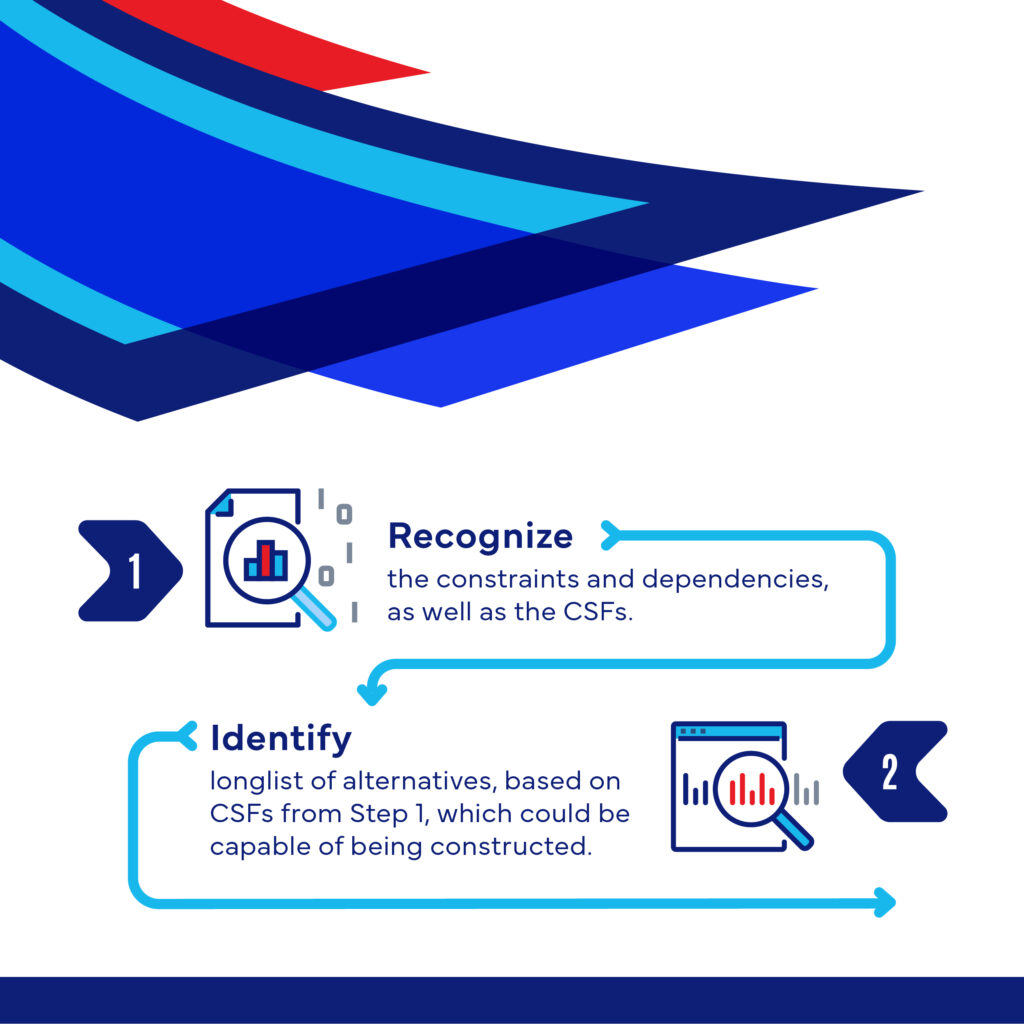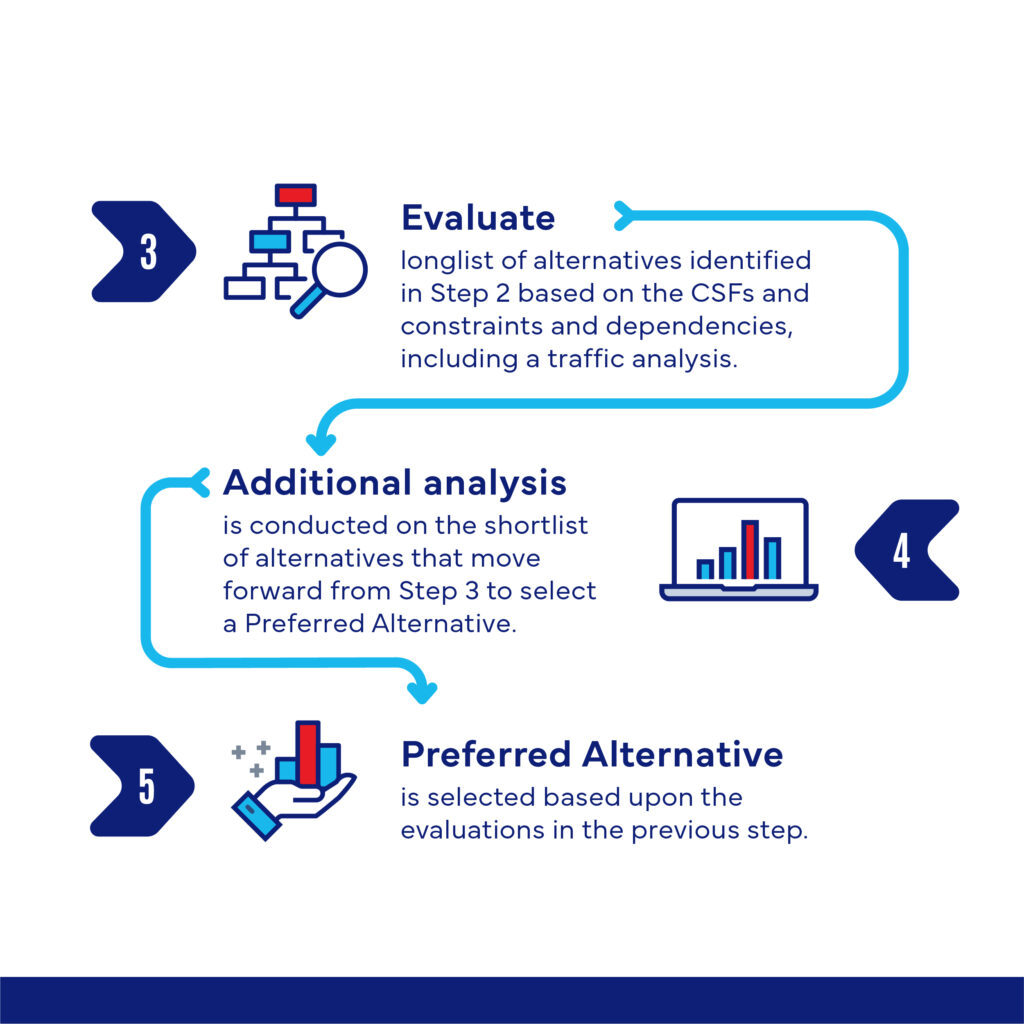Understanding the Alternatives Analysis Process.
The focus of the alternatives analysis is to ensure that the project’s design provides the best possible outcome for meeting the existing and projected travel needs while effectively preserving the environment and accommodating the needs of the surrounding communities.

Understanding the Alternatives Analysis Process.
The focus of the alternatives analysis is to ensure that the project’s design provides the best possible outcome for meeting the existing and projected travel needs while effectively preserving the environment and accommodating the needs of the surrounding communities.

How does the Alternatives Analysis Process work?
All the Build alternatives consider possible future changes like demographic trends, sea level rise, transportation network public demands, and more by 2074. With these types of considerations in mind, the proposed corridors would provide the width and opportunity to accommodate alternative modes of travel (such as passenger transit), non-vehicular facilities (like pedestrian, bicycle, and/or other micromobility facilities), and future utility needs.
The alternatives analysis process is summarised in the 5 steps listed below, as was initially outlined in the EWA EIA Terms of Reference (ToR). Download terms of reference below.
Clearly identify the constraints and dependencies, as well as the Critical Success Factors (CSFs)
Create a baseline of the project area to identify constraints and dependencies of the project.
Overlay engineering constraints such as unstable rock areas, along with environmental constraints, such as wetlands or proximity to protected areas, cultural, or natural heritage sites, on a map so the areas without constraints can be identified.
Develop Critical Success Factors (CSFs) based on the purpose and need statements from the original Gazetting of the East-West Arterial Extension and from the Final ToR for the EWA Extension. CSFs are the main goals that the completed project aims to accomplish.
Identify longlist of alternatives, based on CSFs from Step 1, which could be capable of being constructed.
Each Build Alternative is conceptually developed to meet the CSFs of the project (e.g., engineering feasibility, traffic operations, safety for all users such as pedestrians, bicyclists, and motorists).
The project team collaboratively reviews the environmental and cultural features that need to be protected entirely or their encroachment minimised. This review is integrated with other project requirements such as traffic needs, possible alignments, transportation connectivity, and more. This informs the selection of the initial alternatives.
Evaluate longlist of alternatives identified in Step 2 based on the CSFs and constraints and dependencies, including a traffic analysis.
Future land uses, demographic projections, collaborative discussions between governmental bodies, initial field data collection, and other additional information all go into further evaluation of the longlist, which allows for gradual exclusion of any alternative which does not meet the CSFs.
The shortlist of alternatives is confirmed with careful consideration and agreement between all parties involved in the EIA Project.
Additional analysis is conducted on the shortlist of alternatives that move forward from Step 3 to select a Preferred Alternative.
The shortlist of alternatives goes through a thorough, structured, and elaborate screening process defined by national and international standards. This screening process consists of more detailed assessments for each alternative through a wide array of key disciplines, such as:
- Socio-economics
- Hydrology and Drainage
- Geo-environmental
- Terrestrial Ecology
- Cultural and Natural Heritage
- Greenhouse Gas Emissions
- Noise and Vibration
- Transportation and Mobility
- Engineering
These assessments are carried out based on a qualitative and quantitative assessment method, allowing for objective comparison between the alternatives. In addition, a cost-benefit analysis is performed to provide an estimated measure of the economic costs and benefits of each alternative.
The above information is confirmed during careful consideration and agreement with all parties involved in the EIA Project, simplifying the decisional process on the Preferred Alternative.
Based upon the evaluations in the previous step, a Preferred Alternative is selected.
The Environmental Statement focuses on evaluating the Preferred Alternative. This includes avoidance, minimisation, and mitigation measures that help inform an Environmental Management Plan.
This robust alternatives analysis process provides data-driven, objective information to enable a selection of the most suitable alternative, the Preferred Alternative, which then receives additional assessment and refinement, including the development of optimal mitigation measures. The alternatives analysis process fosters the completion of a thorough and comprehensive Environmental Statement and Environmental Management Plan.
Here’s what we are doing


